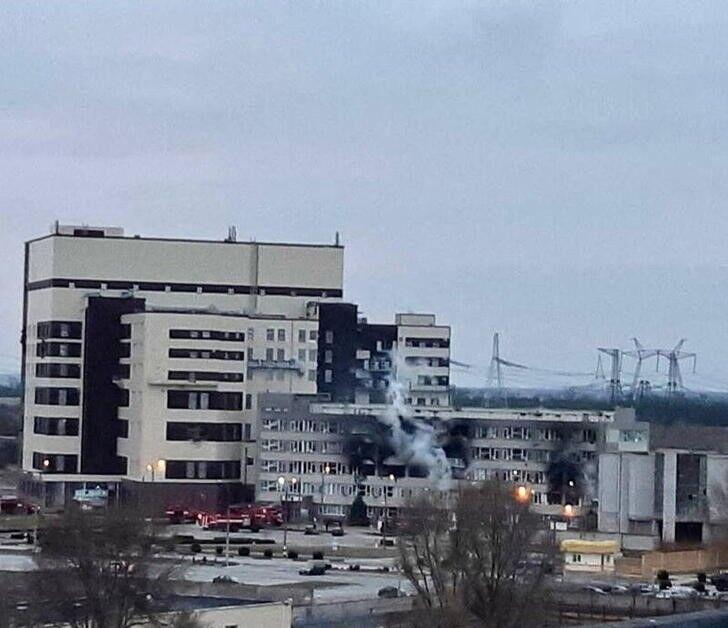
What experts say an attack on a Ukrainian nuclear power plant could do
Posted: 8th March 2022
By Matt Field, Susan D’Agostino | March 4, 2022

A damaged administrative building of the Zaporizhzhia nuclear power plant in Enerhodar, Ukraine, in a handout picture released on Friday. Credit: Energoatom/Via New York Times
Russian forces attacked Europe’s largest nuclear power plant yesterday sparking worldwide concern about a nuclear disaster. While a fire burned at a training building at the Zaporizhzhia nuclear plant, the reactors there were not damaged. The worst-case scenario, a direct hit on radioactive material at the plant, seems to have been avoided.
An attack on the nuclear material at a power plant could release cancer causing radioactivity at least within Ukraine, experts said Friday. Some of the scenarios that might occur during an attack on a nuclear plant include a direct hit, such as a missile strike, that damages the reactor; a strike on a pool where spent nuclear fuel is cooling; or an attack that disrupts the electrical supply to the plant and affects the systems that keep the nuclear core of a reactor cool. “There’s a number of ways this can go very bad,” Allison Macfarlane, a former chairman of the US Nuclear Regulatory Commission, said.
https://thebulletin.org/2022/03/what-experts-say-an-attack-on-a-ukrainian-nuclear-power-plant-could-...